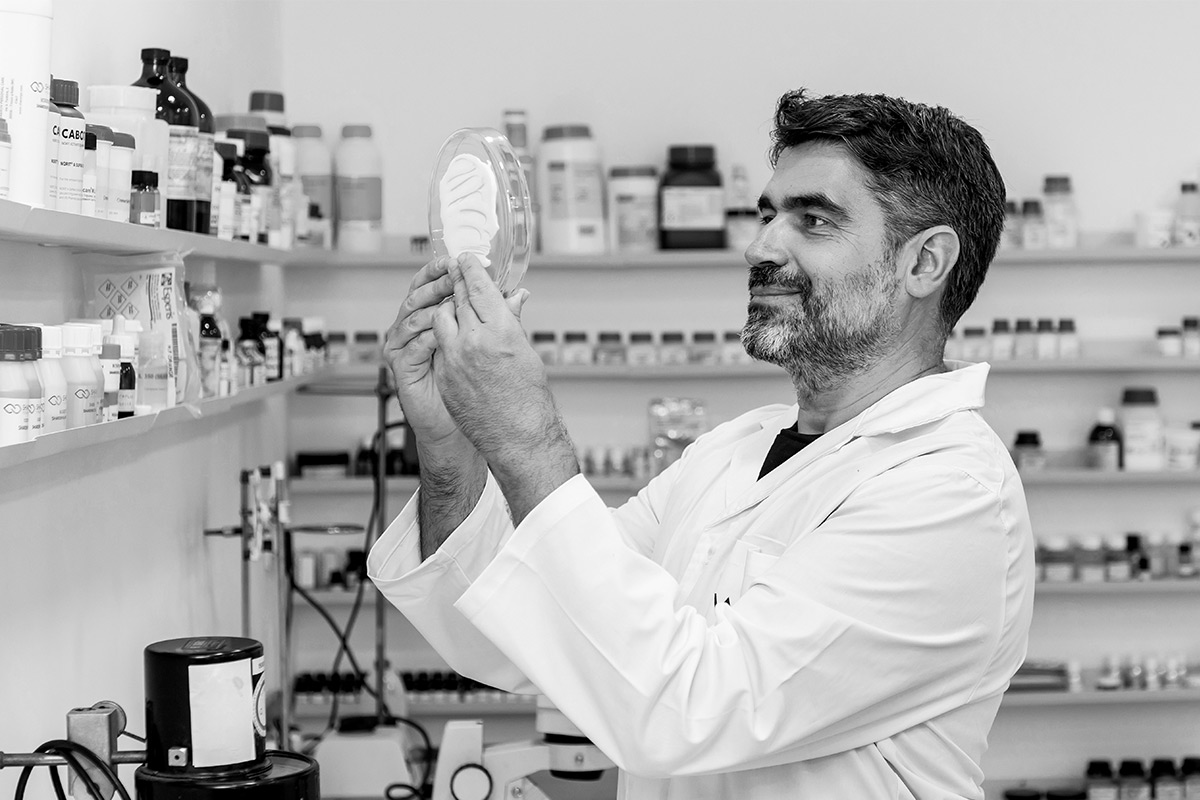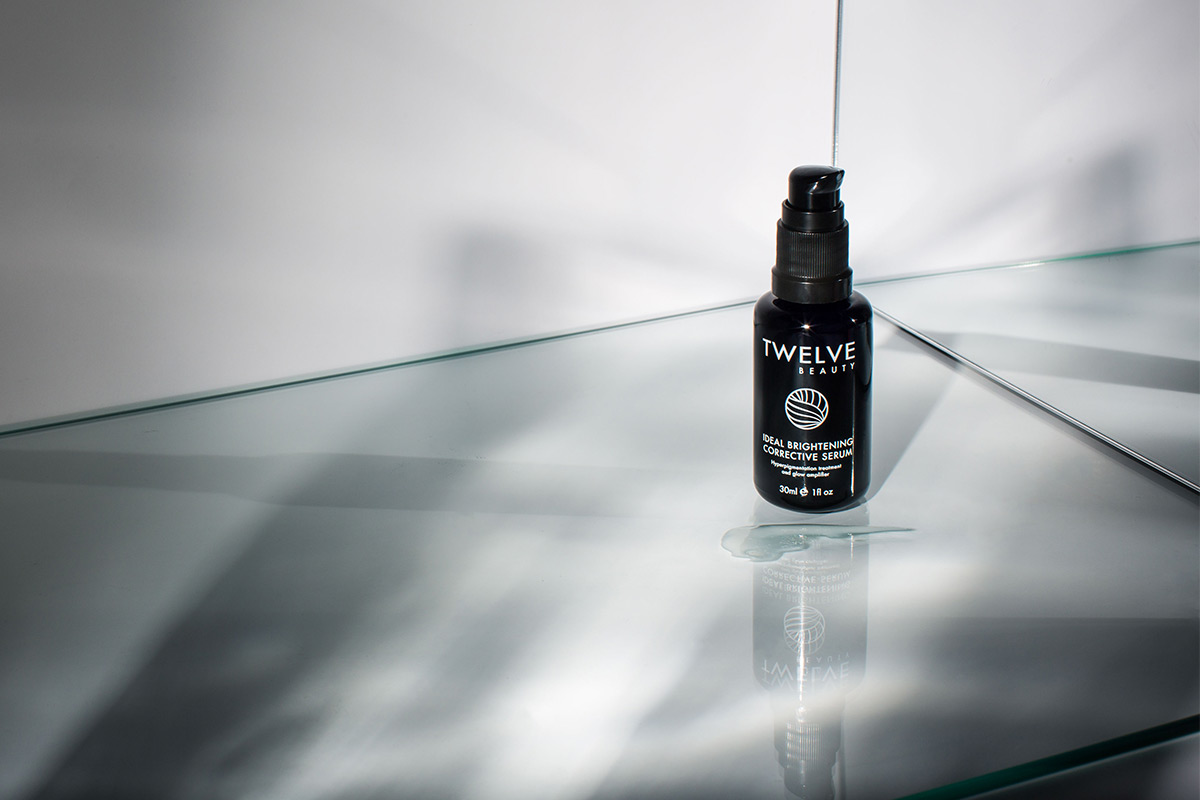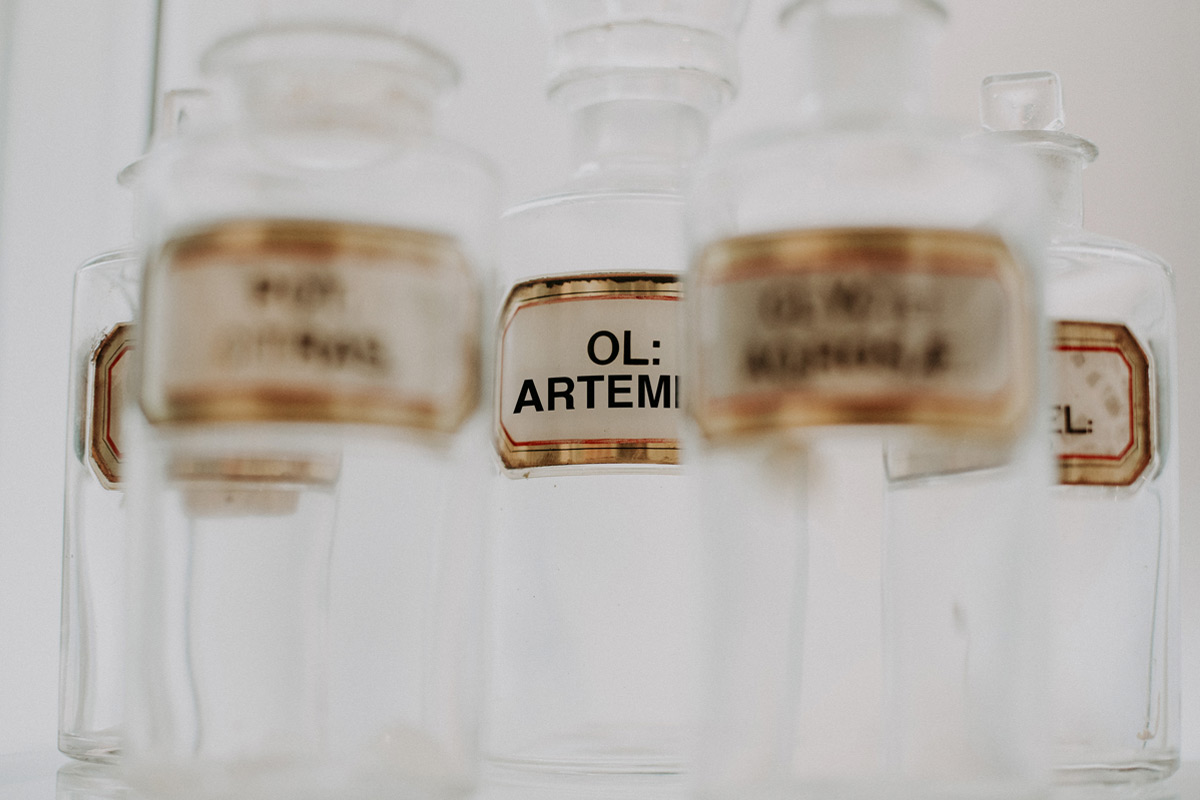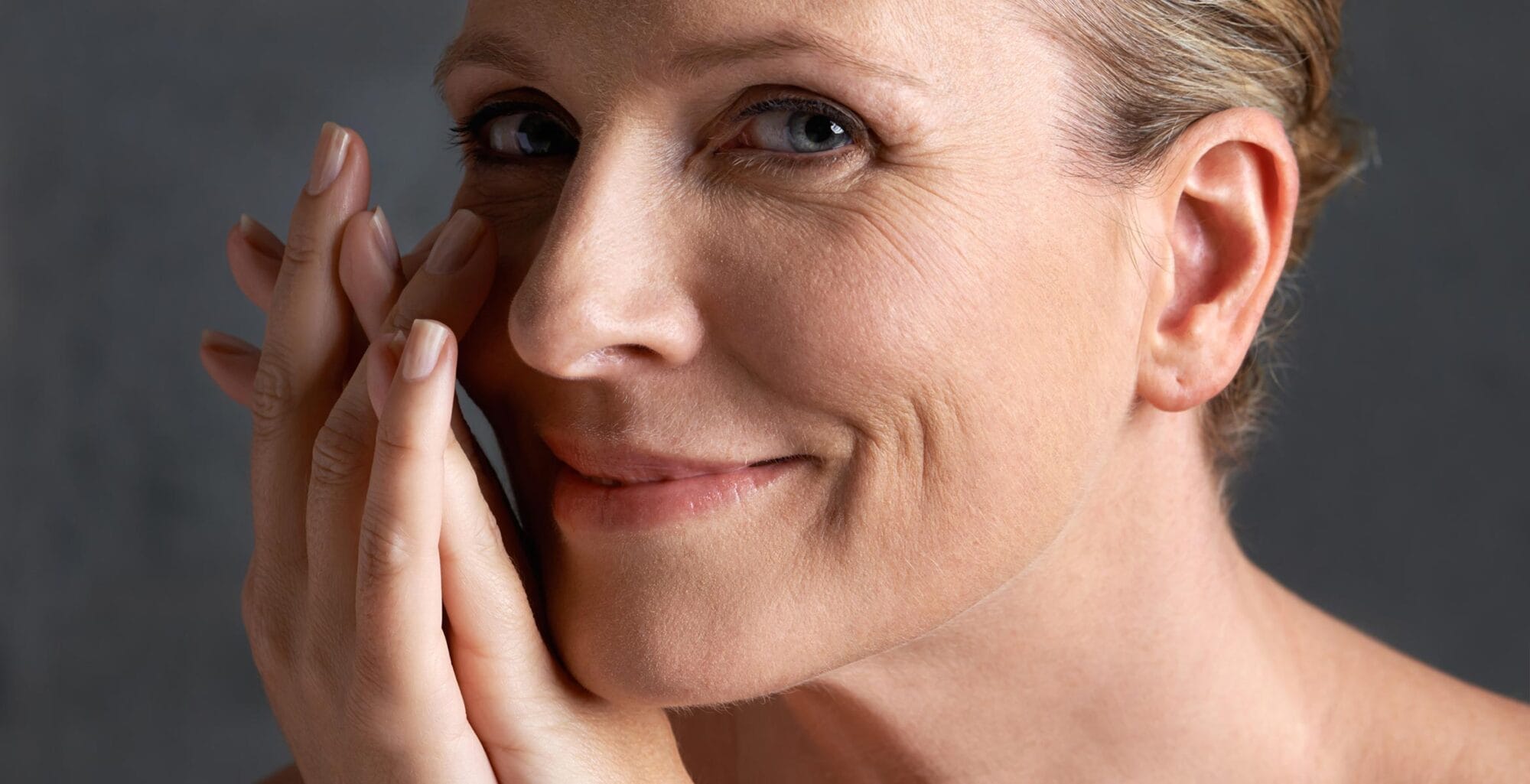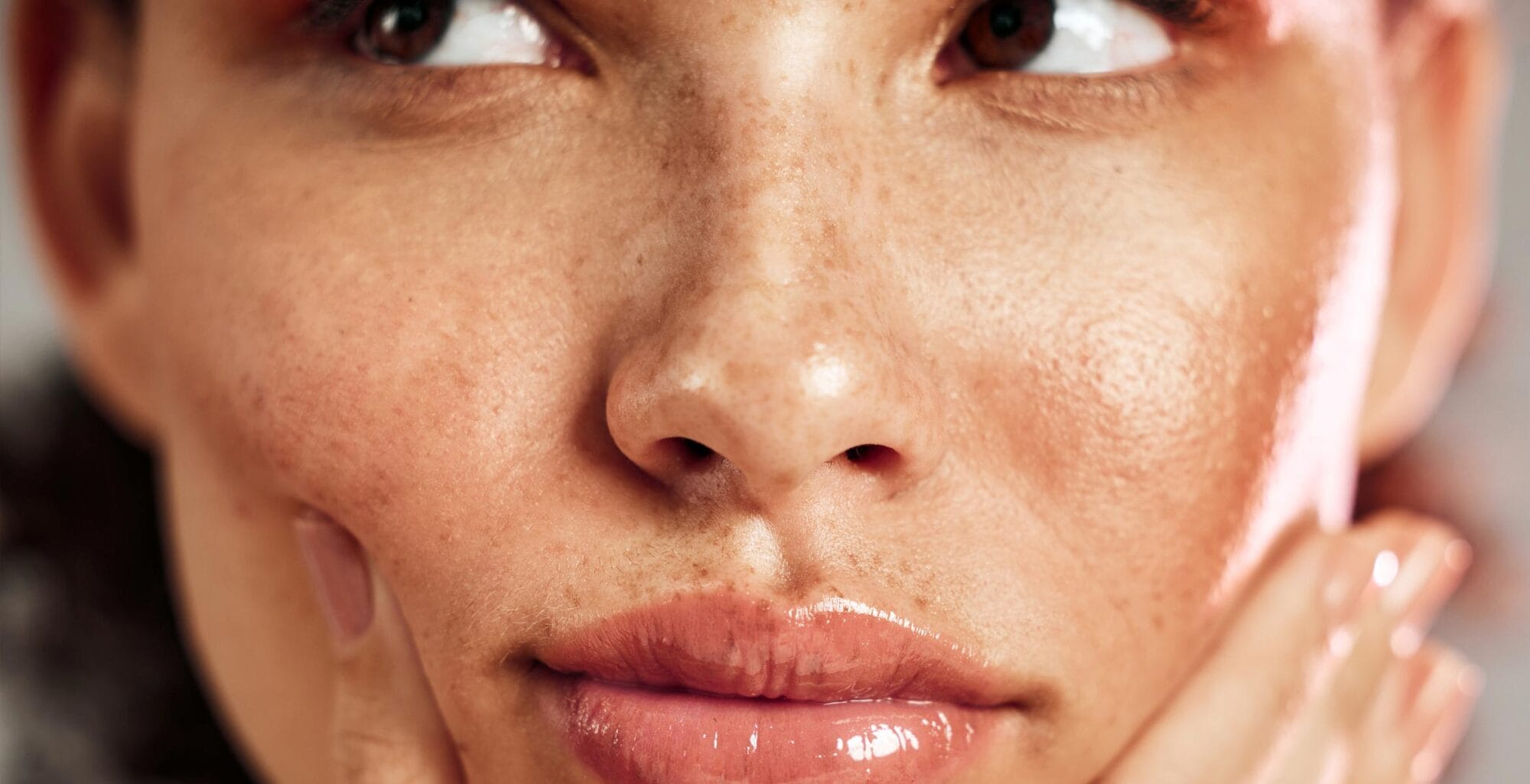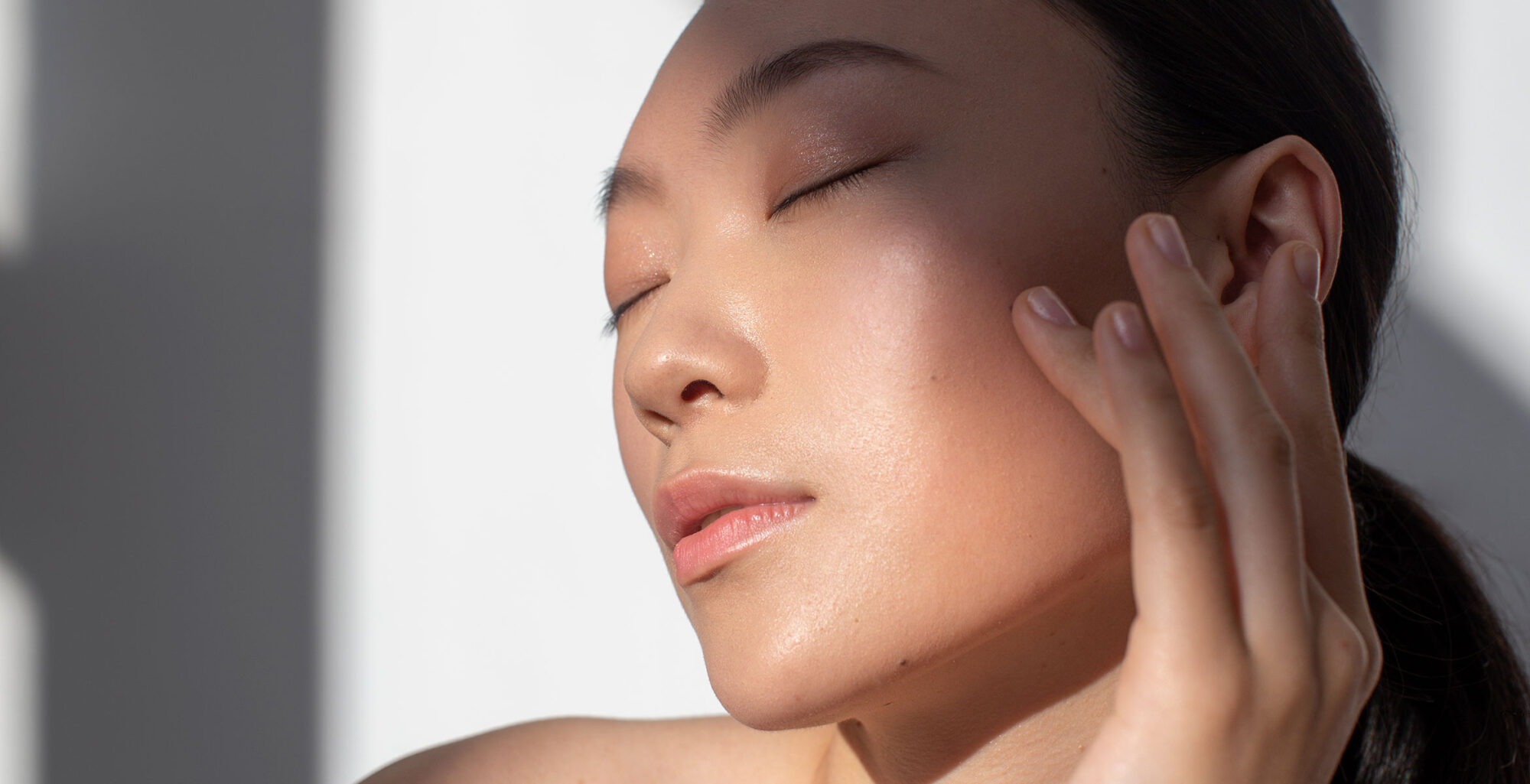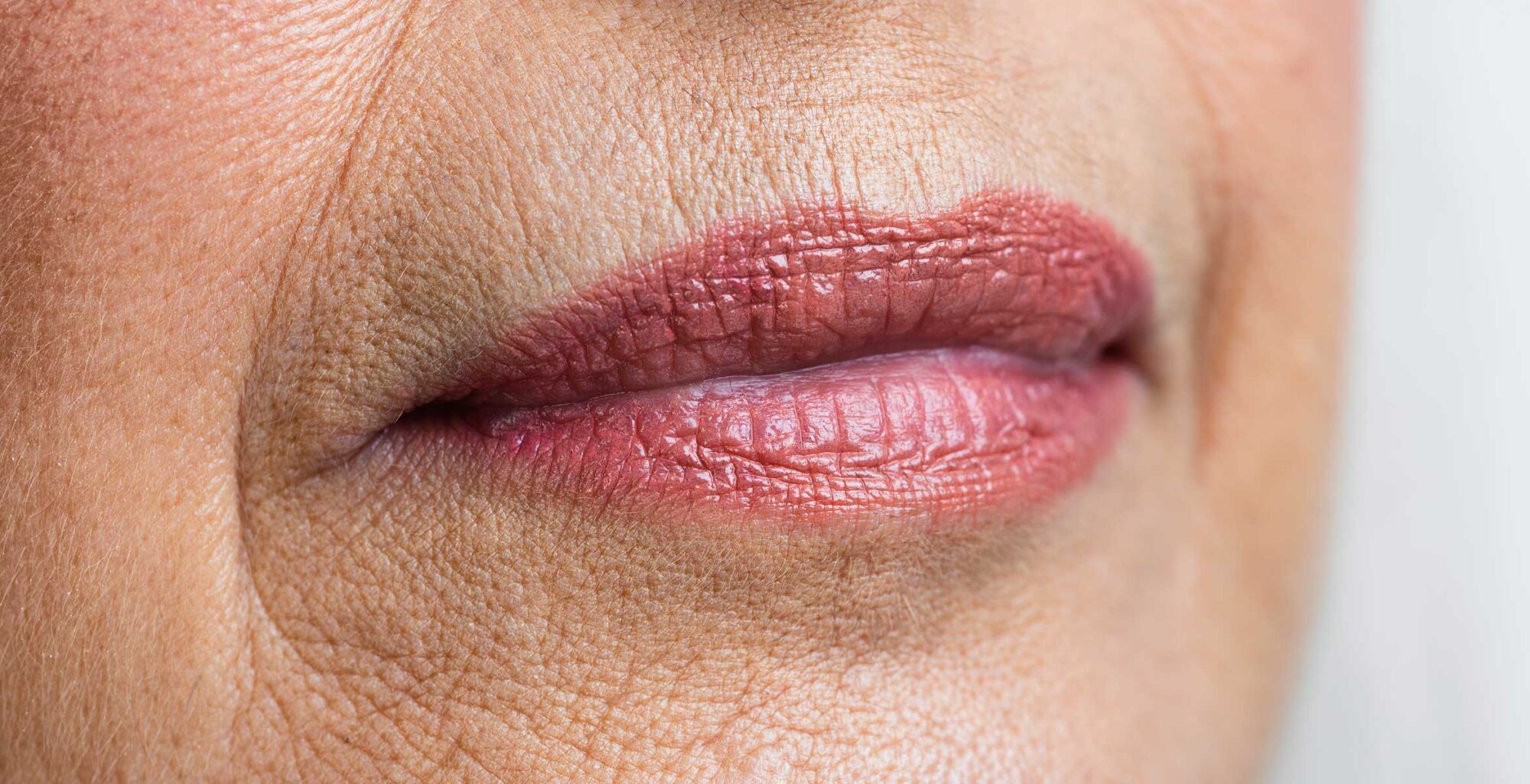The Pros and Cons of Microneedling: An Honest Guide to the Treatment Everyone’s Talking About
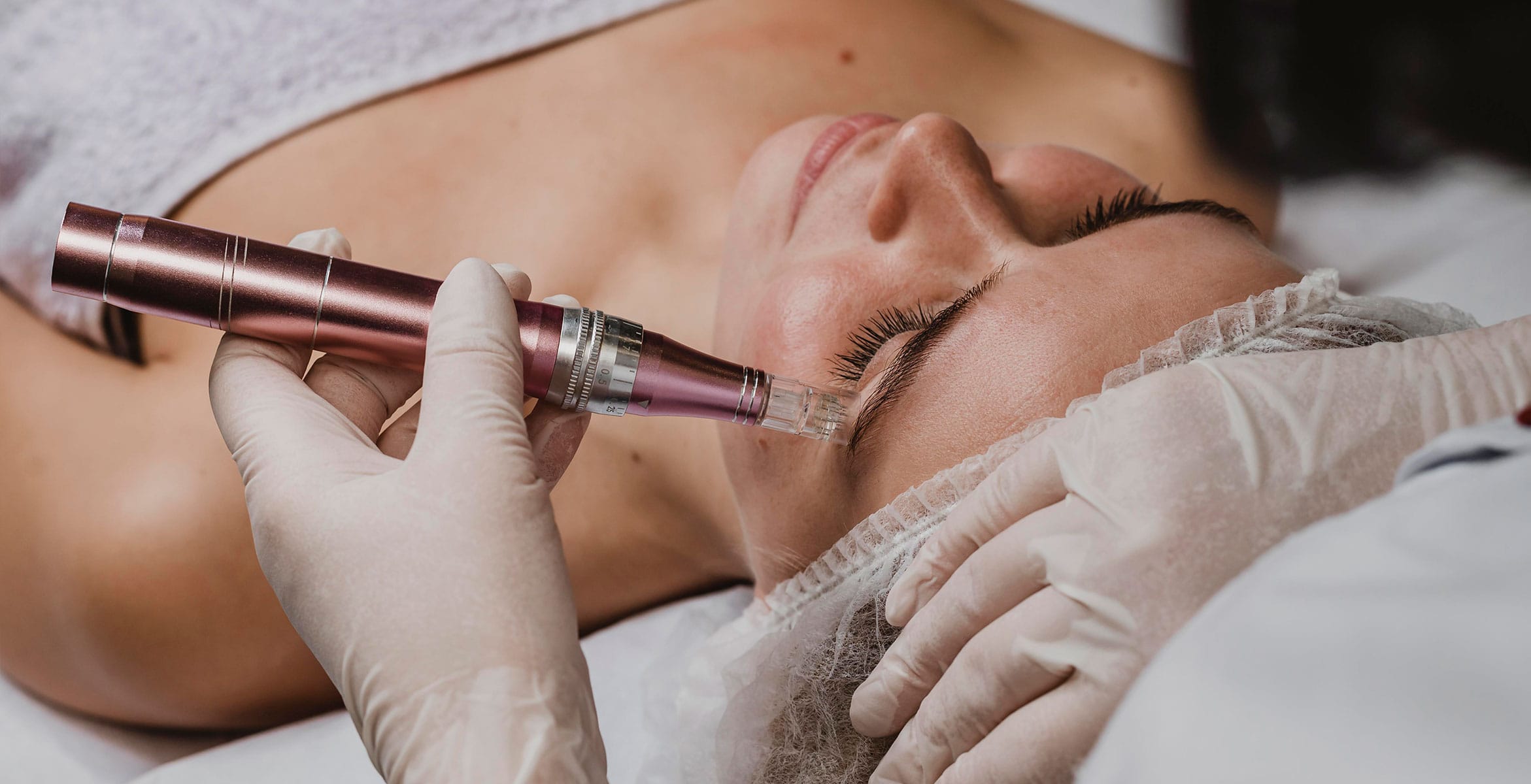
The desire for youthful, radiant skin is universal, and the beauty world continues to deliver an endless stream of treatments that promise smoother texture, fewer fine lines, and a brighter complexion. One of the most talked-about options today is microneedling. Before deciding if it is right for you, it’s essential to understand the pros and cons of microneedling – a treatment hailed as both revolutionary and controversial.
Microneedling is often marketed as a “game-changer” in skincare, with a surge of clinics and at-home devices offering the promise of renewed skin. The principle is simple yet powerful: tiny needles create controlled micro-injuries that stimulate the body’s natural healing response. But the story doesn’t end there. The real potential of this treatment often depends on what you apply during and after needling, from advanced microneedling serum to specialised peptides.
The Science of Microneedling: More Than Just Pricking the Skin
Microneedling works on the principle of controlled injury. By deliberately creating micro-channels in the skin, it activates a cascade of healing responses. The skin responds by producing new collagen and elastin – the vital proteins that keep skin firm, supple, and youthful.
Think of it like aerating a lawn. Just as small holes in soil allow water and nutrients to penetrate more deeply to nourish the roots, microneedling opens pathways for skincare ingredients to reach deeper layers of the skin. This is why pairing it with targeted actives such as peptides or antioxidants can significantly enhance results.
Why It Works:
- Collagen and elastin boost: Improves firmness and elasticity.
- Reduction in fine lines and wrinkles: Helps soften early signs of ageing.
- Improved skin texture and tone: Smooths rough patches and reduces pore size.
- Diminished acne scars: Encourages skin renewal and repair.
- Enhanced absorption: Maximises the effectiveness of microneedling serum.

The Drawbacks
Despite its appeal, there are important downsides. Temporary redness, swelling, or irritation is common after a session. If performed improperly, microneedling can cause infection, scarring, or worsening of skin conditions. It is not recommended for those with active acne, rosacea, or other inflammatory skin disorders.
Understanding these biological mechanisms helps clarify the pros and cons of microneedling – the treatment holds great potential, but results depend on the method, setting, and aftercare.
The Rise of At-Home Microneedling: Spa Feel, Reality Check
The availability of affordable derma rollers, handheld devices and ultra-concentrated serums with applicators containing hollow micro-needles has fuelled the rise of at-home microneedling. For many, the idea of achieving professional-like results in the comfort of their own bathroom is irresistible. It promises a spa-like feel without the price tag.
The Attraction:
- Convenience: No need to book appointments.
- Affordability: Costs a fraction of professional treatments.
- Control: Empowers individuals to take charge of their anti-ageing treatment routines.
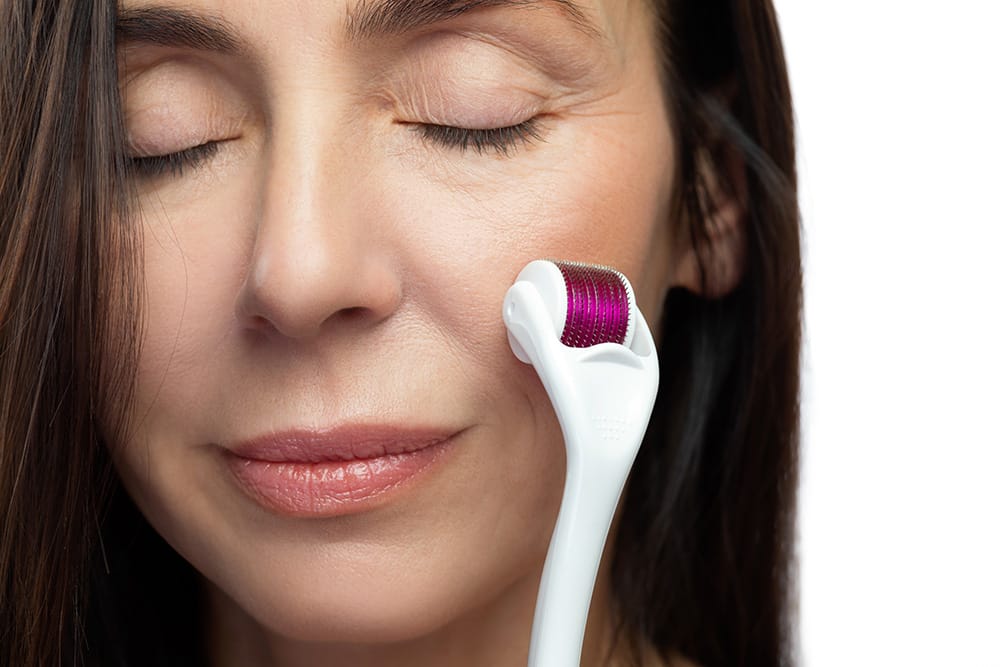
Professional vs. At-Home
However, the distinction between professional microneedling and at-home versions is critical. Dermatologists and aestheticians use devices with longer, sterile needles capable of reaching deeper skin layers safely. These sessions are carried out in controlled environments with professional guidance.
At-home devices, by contrast, typically use shorter needles and often lack the same level of hygiene. Risks include bent or dull needles that tear rather than puncture skin, potential bacterial contamination, and the possibility of scarring. While they can temporarily improve product absorption and deliver a superficial glow, they rarely achieve the dramatic and long-lasting effects of professional sessions.
The bottom line: the pros and cons of microneedling differ significantly depending on whether it’s performed by a professional or at home. Consumers must set realistic expectations before investing in an at-home microneedling treatment.
The Hero Ingredient: The Role of Peptides in Microneedling
The effectiveness of microneedling does not rest solely on the needling itself. What you pair with it – particularly the right microneedling serum – can make a profound difference. Peptides are among the most celebrated options.
What Are Peptides?
Peptides are short chains of amino acids that act as cellular messengers. They signal skin cells to produce more collagen, repair damage, or reduce muscle contractions.
One of the most recognised peptides in the skincare industry is Acetyl Hexapeptide-8, better known as Argireline. If you’re a skincare nerd, you’ll have seen this active in many leading eye creams and face creams formulated to target the signs of ageing.
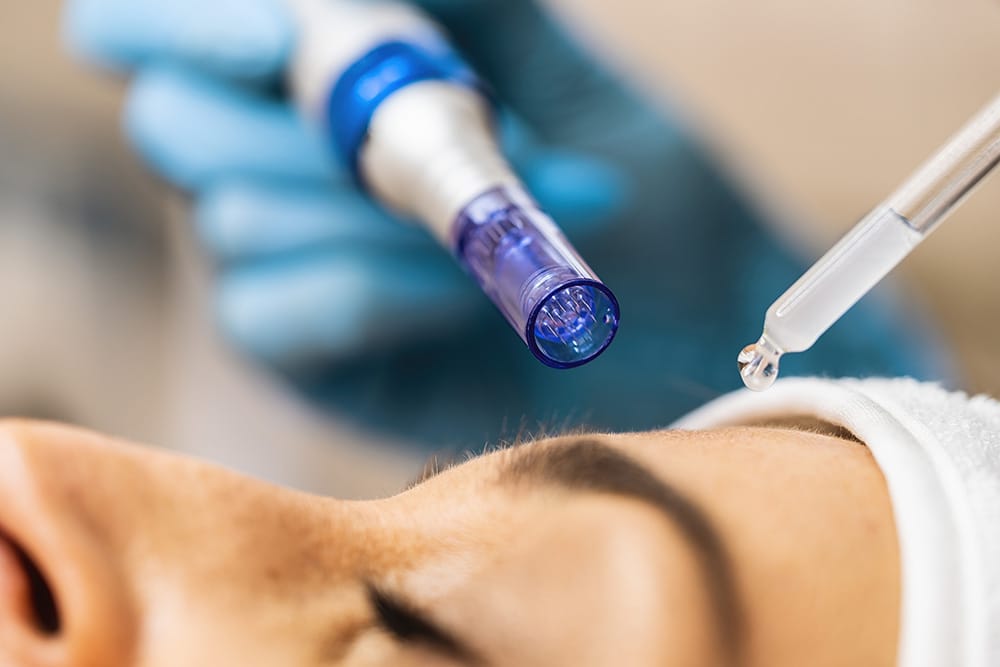
Acetyl Hexapeptide-8 (Argireline): The “Botox-Like” Peptide
This synthetic peptide works by interfering with neurotransmitters that trigger facial muscle contractions. By doing so, it reduces the depth and visibility of expression wrinkles, particularly around the eyes and forehead.
- Pros: Known for its ability to reduce fine lines and wrinkles, leaving the complexion smoother. Provides a non-invasive alternative to injectable treatments.
- Cons: Its penetration is limited when applied topically, meaning results are often subtle and temporary unless combined with delivery systems such as microneedling. Some users report mild irritation.
In the context of microneedling, peptides like Argireline gain an advantage. The micro-channels allow these actives to penetrate more effectively, maximising their potential benefits. This synergy underscores why understanding the pros and cons of microneedling goes hand in hand with ingredient knowledge.
A Valid Alternative: The Natural Path with Marine-Derived Actives
Not everyone is comfortable with synthetic peptides. For those seeking a more natural approach, science has also identified potent alternatives – one of the most promising being Alteromonas Ferment Extract.
What Is It?
This marine-derived polysaccharide originates from microorganisms found in deep-sea waters. Thanks to biotechnology, it can now be sustainably produced without harvesting from fragile ecosystems.
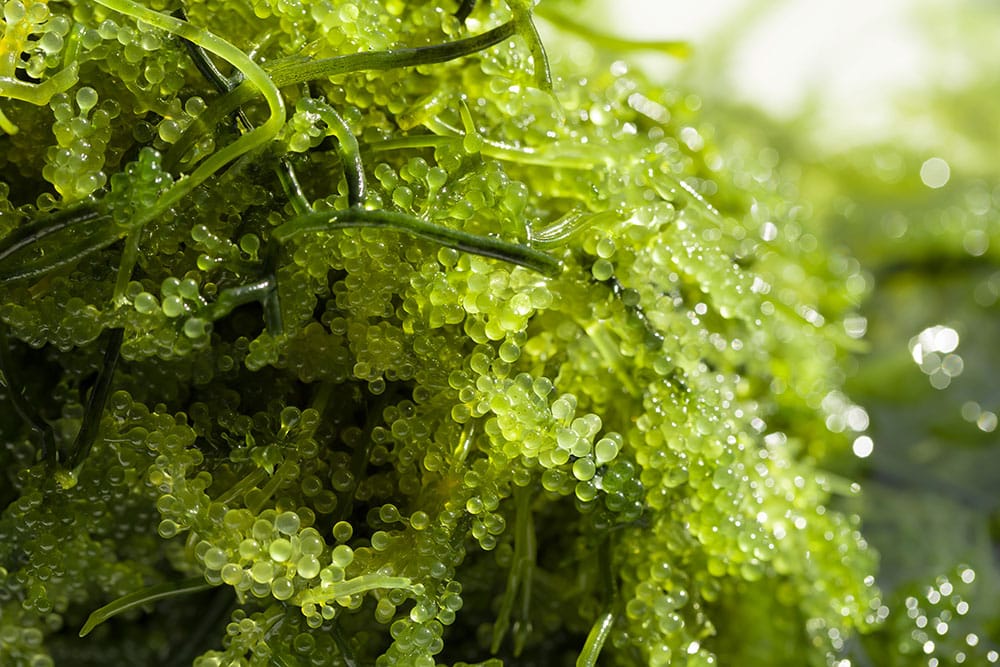
How It Works
Alteromonas Ferment Extract creates a hydrating, protective film on the skin. Beyond hydration, it is prized for its ability to soothe inflammation, calm redness, and smooth expression wrinkles by subtly relaxing muscle contractions.
Key Benefits:
- Provides deep hydration and barrier support.
- Reduces redness and sensitivity.
- Smooths fine lines while leaving skin resilient.
- Multi-functional – delivers both well-ageing and soothing effects.
This makes it an excellent alternative for those who prefer holistic solutions. You’ll find it in advanced formulations such as our B12 Calm Serum, where its soothing and skin longevity properties are harnessed without reliance on synthetic compounds.
For many, the pros and cons of microneedling tip towards the positive when paired with natural actives like Alteromonas Ferment Extract. It expands the treatment’s potential while avoiding some of the concerns linked to synthetic peptides.

Making an Informed Choice
Microneedling is more than a beauty fad – it’s a scientifically supported technique for skin rejuvenation. But its effectiveness depends on method, aftercare, and the actives used alongside it.
Professional microneedling offers transformative results under expert supervision, while at-home treatments provide convenience with limitations and risks. Pairing microneedling with potent ingredients – whether synthetic options like Acetyl Hexapeptide-8 or natural alternatives such as Alteromonas Ferment Extract – can amplify results and target concerns from fine lines and wrinkles to acne scars and uneven skin texture.
That said, you don’t always need needles to experience similar benefits. With a well-researched and expertly formulated skincare routine, using ingredients that stimulate collagen, refine skin texture, and boost hydration, you can also achieve a “microneedling effect” over time – without the invasiveness of the treatment itself.
Ultimately, the decision comes down to balancing the pros and cons of microneedling in your own context. Consulting a dermatologist or a trusted skincare professional can help determine the safest, most effective approach tailored to your skin’s needs.


